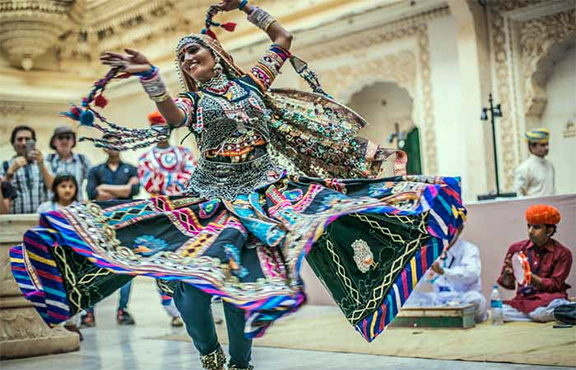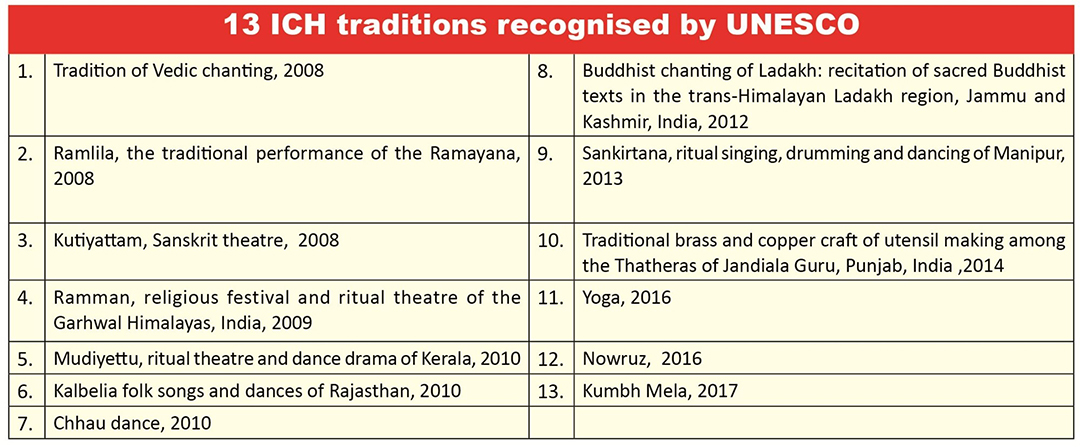Indian Heritage & Culture
Kalbeliya Dance
- 01 Jul 2021
- 3 min read
Why in News
Recently, due to Covid-19-Pandemic an app called chendavia is gaining popularity among the students of kalbeliya dance.
Key Points
- About:
- Kalbeliya dances are an expression of the Kalbelia community’s traditional way of life.
- It is associated with a Rajasthani tribe of the same name.
- It was included in the United Nations Educational, Scientific and Cultural Organizations (UNESCO) list of Intangible Cultural Heritage (ICH) in 2010.
- UNESCO’s List of Intangible Cultural Heritage is made up of those intangible heritage elements that help demonstrate diversity of cultural heritage and raise awareness about its importance.
- It was established in 2008 when the Convention for Safeguarding of the Intangible Cultural Heritage came into effect.
- The dance form consists of swirling; graceful movements that make this dance a treat to behold.
- The movements associated with the Kalbelia also make it one of the most sensuous forms of folk dance in India.
- It is generally performed for any joyous celebration and is considered to be an integral part of the Kalbeliya culture.
- Another unique aspect of the Kalbelia dance is that it is only performed by women while the men play the instruments and provide the music.
- Kalbeliya dances are an expression of the Kalbelia community’s traditional way of life.
- Instruments & Dress:
- Women in flowing black skirts dance and swirl, replicating the movements of a serpent, while men accompany them on the “khanjari” instrument and the "poongi", a woodwind instrument traditionally played to capture snakes.
- The dancers wear traditional tattoo designs, jewellery and garments richly embroidered with small mirrors and silver thread.
- Kalbeliya Songs:
- They disseminate mythological knowledge through stories.
- They also demonstrate the poetic acumen of the Kalbeliya, who are reputed to compose lyrics spontaneously and improvise songs during performances.
- Transmitted from generation to generation, the songs and dances form part of an oral tradition for which no texts or training manuals exist.
- Kalbeliya Tribe:
- Kalbeliya tribe people were once professional snake handlers, today they evoke their former occupation in music and dance that is evolving in new and creative ways.
- They live a nomadic life and belong to the scheduled tribes.
- The largest number of the population of Kalbeliyas is in Pali district, then Ajmer, Chittorgarh and Udaipur district (Rajasthan).
- Other Traditional Folk Dances of Rajasthan: Gair, Kachchhi Ghodi, Ghoomar, Bhavai, etc.






